Planting and caring for beets in the open field
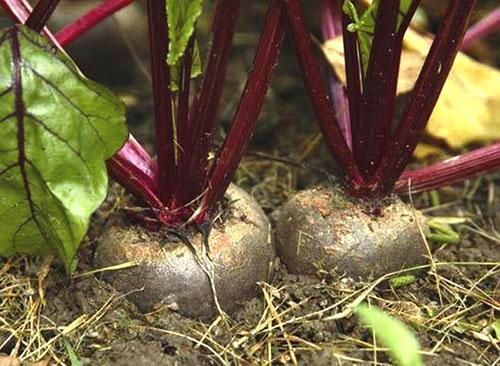 To grow a delicious root crop with good yields, you will need to know some of the intricacies of planting and caring for beets in the open field. The culture is two years old, but if grown incorrectly, the formation of a peduncle will begin, while the root crop will not work or it will be small and ugly. Cultivated varieties that form round heads and elongated cylindrical fruits. Beets are table, fodder and sugar. The color of a table root crop can be not only burgundy, sometimes varieties with a different color are found. There are leafy beet varieties.
To grow a delicious root crop with good yields, you will need to know some of the intricacies of planting and caring for beets in the open field. The culture is two years old, but if grown incorrectly, the formation of a peduncle will begin, while the root crop will not work or it will be small and ugly. Cultivated varieties that form round heads and elongated cylindrical fruits. Beets are table, fodder and sugar. The color of a table root crop can be not only burgundy, sometimes varieties with a different color are found. There are leafy beet varieties.
Soil preparation and sowing seeds
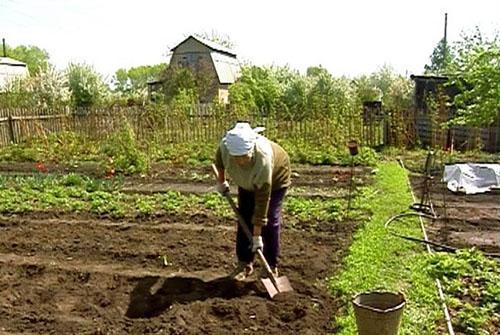 Beets like fertile light soil with a neutral reaction. Therefore, the cultivation garden is prepared in the fall. The best predecessors will be crops that are demanding on soil fertility. It can be onions, cucumbers, tomatoes. Do not sow beets after cruciferous crops because they have common pests. The bed must have been limestone in previous years. Before sowing, it is additionally introduced into the soil superphosphate and potassium chloride. For fertility, a sufficient humus content is important, which is created with the introduction of compost or humus.
Beets like fertile light soil with a neutral reaction. Therefore, the cultivation garden is prepared in the fall. The best predecessors will be crops that are demanding on soil fertility. It can be onions, cucumbers, tomatoes. Do not sow beets after cruciferous crops because they have common pests. The bed must have been limestone in previous years. Before sowing, it is additionally introduced into the soil superphosphate and potassium chloride. For fertility, a sufficient humus content is important, which is created with the introduction of compost or humus.
Fresh manure is not added to the garden bed for root crops. Beets absorb nitrogen fertilizers well and store them in root crops. Therefore, an excess of nitrogen in the soil is unacceptable.
The soil is loosened deeply and cut into furrows with a distance of 25 cm. The seeds are spread at a distance of 9-10 cm. From above they are sprinkled to a depth of 2 cm, the soil is moistened. Seedlings will appear in a week if pre-sowing seed treatment is carried out.
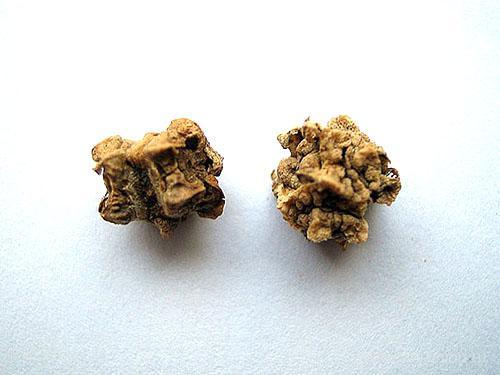 Beet seeds are collected in nodules and are located on top in a common shell, which must be destroyed to accelerate seed germination. They are soaked in an ash solution, in stimulants, followed by germination. For this, the seed is kept wet for a day or two. During this time, the seeds swell, and their germination in the ground is faster.
Beet seeds are collected in nodules and are located on top in a common shell, which must be destroyed to accelerate seed germination. They are soaked in an ash solution, in stimulants, followed by germination. For this, the seed is kept wet for a day or two. During this time, the seeds swell, and their germination in the ground is faster.
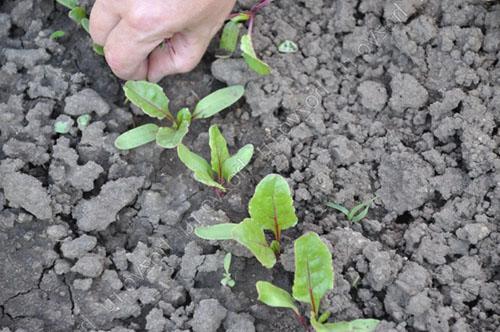 Up to five seedlings can emerge from the nodule. Therefore, after germination, the plants should be thinned out, leaving one strong sprout from the glomerulus. There are single-sprout beet seeds and this information is written on the package. How to plant beets, at what distance, depends on further care. If you need to use young leaves and nodules, beets are sown more often in order to thin out and use early production.
Up to five seedlings can emerge from the nodule. Therefore, after germination, the plants should be thinned out, leaving one strong sprout from the glomerulus. There are single-sprout beet seeds and this information is written on the package. How to plant beets, at what distance, depends on further care. If you need to use young leaves and nodules, beets are sown more often in order to thin out and use early production.
Summer beet care

To grow tasty root crops with good yields, you must follow simple care rules:
- sowing at the optimum time;
- right watering plants;
- weed and pest control;
- plant feeding.
If the beets are intended for obtaining marketable products for winter storage, you should not rush to sowing. The soil should be warmed up by 10 degrees, the seedlings should not fall under the cold snap, otherwise the beets will shoot themselves. Therefore, sowing begins when stable warmth is guaranteed for young seedlings.
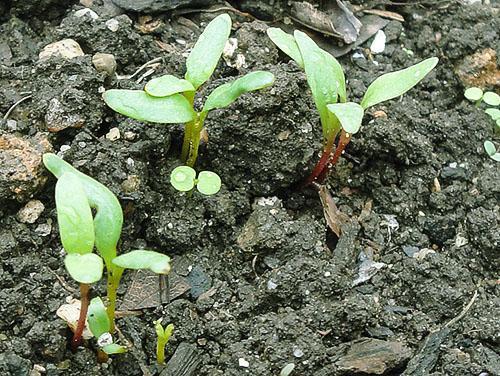 In each region, warmth comes at different times. Therefore, for Ukraine, sowing can be in April, in the Moscow region in mid-May, in Eastern Siberia at the very end of May. When growing beets, there are several features that will help you grow a tender root vegetable.
In each region, warmth comes at different times. Therefore, for Ukraine, sowing can be in April, in the Moscow region in mid-May, in Eastern Siberia at the very end of May. When growing beets, there are several features that will help you grow a tender root vegetable.
Only beets need to be fed with ordinary table salt. At the same time, it becomes softer and sweeter.The explanation for the phenomenon lies in the origin of the plant. In the Mediterranean, for centuries it was blown by the sea, saturated with salt air, and it became physiologically necessary for a plant.
After thinning the plant, it is watered with the addition of fertilizer for the fastest development of the rosette. How to feed the beets for growth is chosen according to the circumstances. This can be an herbal infusion with nettle, potassium nitrate, or urea... Any of the presented fertilizers contain nitrogen.
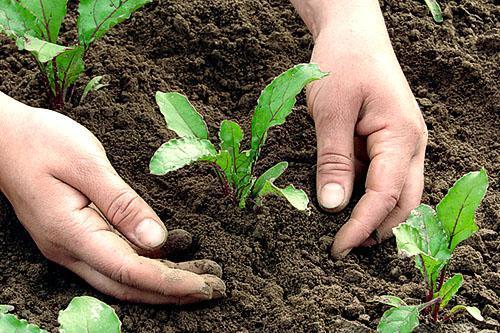
After 6-7 developed leaves appear, foliar feeding with microelements should be carried out, the most important of which for beets will be boron. If, after applying nitrogen, the beets grow poorly, then they decide to feed them after analyzing the acidity of the soil. It is possible that the acidic environment interferes with the assimilation of elements. The first aid in this case will be the introduction of ash.
The lack of boron in the soil must be replenished. Signs of a lack of an element will be beet fomoz - the formation of black spots on the root crop. Preventive spraying with a solution of 5 g of boric acid per 10 liters of water will save root crops from flaws.
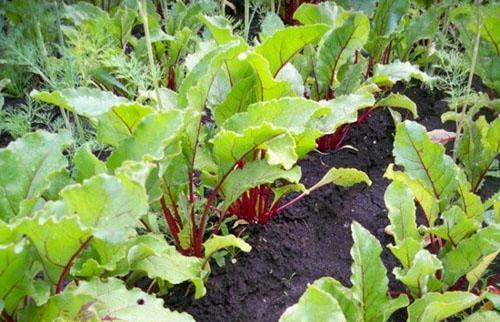 After the fruit has formed the size of a walnut, a second top dressing is done with phosphorus-potassium fertilizers. How to feed the beets in July is chosen based on the requirements of plant development. From the moment the root crop begins to form, any fertilizing with the inclusion of nitrogen compounds should be excluded. Fertilizer Agricola-4 can be considered an example of such a balanced feeding. In this case, fertilizing is carried out without spraying, from the spout closer to the plants, without wetting the leaf blade. Any dressing is performed on wet soil after watering.
After the fruit has formed the size of a walnut, a second top dressing is done with phosphorus-potassium fertilizers. How to feed the beets in July is chosen based on the requirements of plant development. From the moment the root crop begins to form, any fertilizing with the inclusion of nitrogen compounds should be excluded. Fertilizer Agricola-4 can be considered an example of such a balanced feeding. In this case, fertilizing is carried out without spraying, from the spout closer to the plants, without wetting the leaf blade. Any dressing is performed on wet soil after watering.
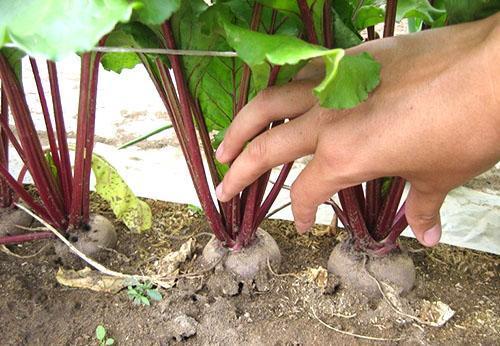 Sometimes the question arises of how to water beets in the open field. The root crop does not develop well with uneven soil moisture. Abundant watering of dry soil can lead to cracking of root crops. Therefore, water-charging irrigation is required by sprinkling with the supply of up to 20 liters of water per square one time. In between, weekly watering is required, which is stopped 2 weeks before harvesting.
Sometimes the question arises of how to water beets in the open field. The root crop does not develop well with uneven soil moisture. Abundant watering of dry soil can lead to cracking of root crops. Therefore, water-charging irrigation is required by sprinkling with the supply of up to 20 liters of water per square one time. In between, weekly watering is required, which is stopped 2 weeks before harvesting.
Beet pests and diseases
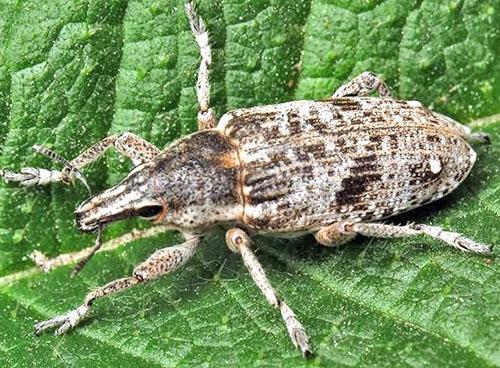 Healthy beet leaves have a shiny surface without spots. The appearance of uncharacteristic chlorotic manifestations, dry spots indicates that it is time to carry out foliar treatment with fungicidal preparations. The best will be prevention using Fitosporin or Bordeaux mixture with a concentration of 1%.
Healthy beet leaves have a shiny surface without spots. The appearance of uncharacteristic chlorotic manifestations, dry spots indicates that it is time to carry out foliar treatment with fungicidal preparations. The best will be prevention using Fitosporin or Bordeaux mixture with a concentration of 1%.
Pests cause great damage to beets:
- beet fleas;
- nematodes and wireworms;
- winter and cabbage scoops.
The control of these pests includes methods of mechanical sampling of pests from the ground, biological and chemical methods of control. The use of repelling agents on developing crops is the best prevention. Using soil stimulants will allow microorganisms to rebalance themselves without the use of chemicals. Therefore, the regular use of drugs such as Radiance and EM-1 Baikal will help increase the immunity of plants to pests and diseases. In addition, a film is created on the leaves, which prevents the penetration of spores and punctures.
How and when to store beets
 The most valuable are medium-sized root crops. That is why you should not rush to sowing seeds in spring. The larger the beets grow, the coarser their fiber. Remove the beets before frost, since the root crop does not tolerate sub-zero temperatures and will be unsuitable for storage. And the biology of the plant is such that the grown root rises above the surface. Therefore, beets are removed early.
The most valuable are medium-sized root crops. That is why you should not rush to sowing seeds in spring. The larger the beets grow, the coarser their fiber. Remove the beets before frost, since the root crop does not tolerate sub-zero temperatures and will be unsuitable for storage. And the biology of the plant is such that the grown root rises above the surface. Therefore, beets are removed early.
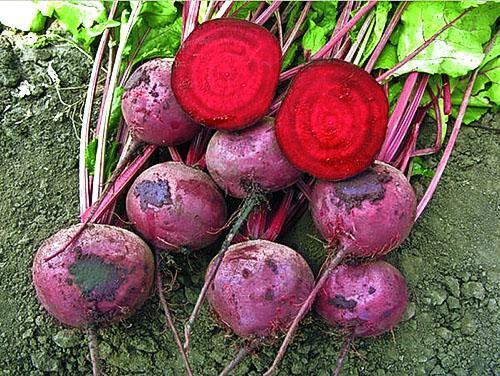 The vegetable is freed from the petioles without a knife, by twisting the tops. The cut with a knife dries for a long time and more juice leaves the root crop than with uneven twisting. The earth dries out and is gently scraped off the surface without disturbing the thin skin. Damaged fruits are not suitable for storage. You can store beets in a box of sand and simply on top of the potatoes.It picks up excess moisture from the cellar.
The vegetable is freed from the petioles without a knife, by twisting the tops. The cut with a knife dries for a long time and more juice leaves the root crop than with uneven twisting. The earth dries out and is gently scraped off the surface without disturbing the thin skin. Damaged fruits are not suitable for storage. You can store beets in a box of sand and simply on top of the potatoes.It picks up excess moisture from the cellar.
Video about planting beets